Seven Questions Over Breakfast
with Emily Arnold McCully
 June 13th, 2012 by jules
June 13th, 2012 by jules
 It’s a real pleasure to have Caldecott Medalist Emily Arnold McCully visiting 7-Imp today. This is Emily pictured here, as a child, circa mid-1940s. As she notes at the bio at her site, she was a daredevil girl, born in Illinois but raised in a New York City suburb. Her hero was John Muir, and she decided to be a naturalist one day, but instead she grew up to write and illustrate stories about fellow daredevil girls, lucky for us readers.
It’s a real pleasure to have Caldecott Medalist Emily Arnold McCully visiting 7-Imp today. This is Emily pictured here, as a child, circa mid-1940s. As she notes at the bio at her site, she was a daredevil girl, born in Illinois but raised in a New York City suburb. Her hero was John Muir, and she decided to be a naturalist one day, but instead she grew up to write and illustrate stories about fellow daredevil girls, lucky for us readers.
Throughout her career in children’s literature, Emily hasn’t stuck to only one style of illustrating. As you’ll read below, she uses cartoon-like art for beginning reader titles and more dramatic pen-and-ink watercolors for her picture book biographies, many of them, as noted, about young girls or women. But, no matter the style in which she’s working, she nails it — the emotional tone, that is. Whether she’s raising the hairs on the backs of our necks in Eve Bunting’s tales (Ballywhinney Girl and The Banshee); bringing to vivid life the stories of historical figures via her watercolors, both sweeping and delicate (The Escape of Oney Judge: Martha Washington’s Slave Finds Freedom, for which she received the Jane Addams Children’s Book Award, or Manjiro: The Boy Who Risked His Life for Two Countries); or making young, emerging readers laugh with the carefree art of her Grandma I Can Read chapter books, she’s expertly creating atmosphere, putting to great use light and shadow and her shimmering watercolors to set a mood and tell a rich tale.
It was for her beautiful impressionistic paintings in Mirette on the High Wire that Emily won the 1993 Caldecott Medal, and she received the Christopher Award in 1985 for the splendid tale that is Picnic.
And it’s been many years now I’ve enjoyed her books, along with my own children, so I thank her for taking the time to visit today. She has at least two new picture books already out this year (you’ll see those 2012 titles and some art from them below), but since she’s hard to keep up with, I may even have that wrong. And surely there’s more to come this year.
Her breakfast-of-choice? Strong coffee, oatmeal, and an orange. I can do that, especially the strong coffee part. I’ll set the table, while getting the basics from her, before seven questions over breakfast.
Jules: Are you an illustrator or author/illustrator?
Emily: Author/Illustrator.
(Farrar, Straus and Giroux, 2008)
(Click to enlarge)

Jules: Can you list your books-to-date?
Emily:
- Ballerina Swan by Allegra Kent
- Ballywhinney Girl by Eve Bunting
- Wonder Horse
- The Secret Cave
- Manjiro
- Marvelous Mattie
- The Escape of Oney Judge
- Beautiful Warrior
- The Ballot Box Battle
- The Bobbin Girl
- Mirette on the High Wire & sequels
- Picnic, First Snow, School
- The Grandma Mix-Up & sequels
…and many others.
(Click to enlarge spread and see text)
(Click to enlarge spread and see text)
I heard her singing as she walked.”
(Click to enlarge spread and see text)
 Jules: What is your usual medium, or––if you use a variety—your preferred one?
Jules: What is your usual medium, or––if you use a variety—your preferred one?
Emily: Watercolor, often with pen & ink.
Jules: If you have illustrated for various age ranges (such as, both picture books and early reader books OR, say, picture books and chapter books), can you briefly discuss the differences, if any, in illustrating for one age group to another?
Emily: The differences between illustrating for younger and older children is mostly in the medium. Picture books are a unique form — a delivery system for telling a story with words and images, whose dimensions are fairly large. Full color is used (although not when I started out!). The text should not overlap with the pictures — but rather carry necessary information that cannot be conveyed by the pictures.
Story books usually have black and white pictures that depict incidents and characters, which are described in the text as well. I have used more of a cartoon style for my Grandma I Can Reads. But other story books were drawn the same way many of my
picture books are.
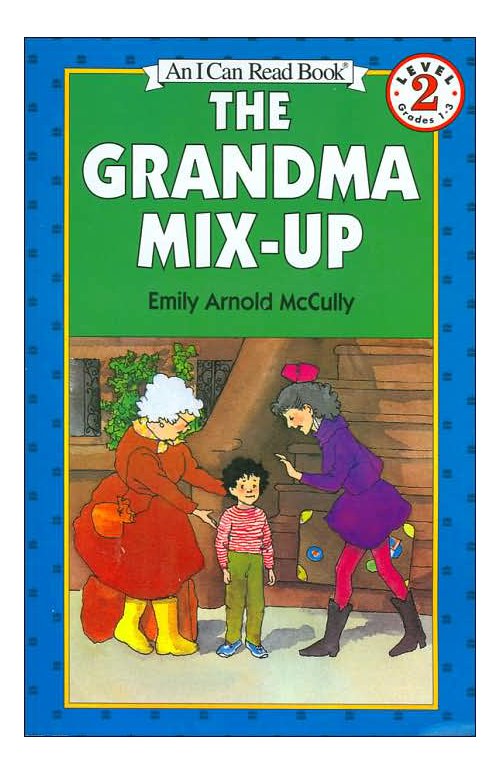
 Jules: Where are your stompin’ grounds?
Jules: Where are your stompin’ grounds?
Emily (pictured right with her son): I live in New York City and get to spend the summer in Austerlitz, NY, up the Hudson River about two and a half hours. Itʼs beautiful!
Jules: Can you briefly tell me about your road to publication?
Emily: My ambition was to become an adult novelist — and I succeeded in the ’80s. During the long writing periods, I supported myself by doing illustrations for book jackets, magazines, pharmaceutical ads, and so forth. I was asked by a radio station to design a poster for the subway, depicting children playing. I did three versions, and a week after the first went up, a subway strike was called. A childrenʼs book editor happened to see that poster during its little window of life and tracked me down to see if Iʼd like to illustrate a book. Of course, I did. It led to another, then another, and so on. (All pre-separated, in those days).
Jules: Can you please point readers to your web site and/or blog?
Emily: emilyarnoldmccully.com.



The children stopped dancing and went to get a better look too.”

Sophie braced herself for what she thought would be coming.”


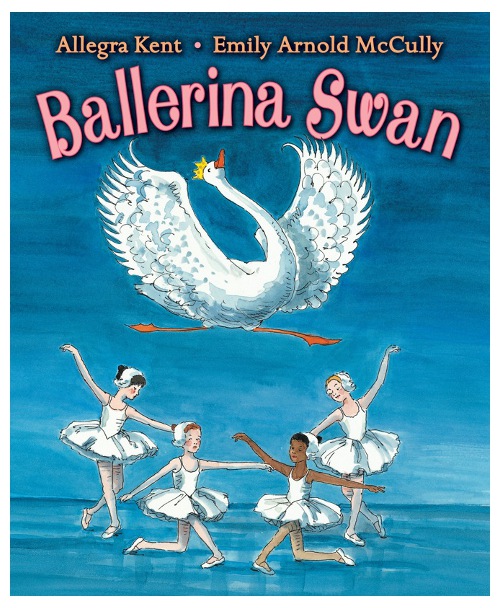
Jules: If you do school visits, tell me what they’re like.
Emily: I used to visit schools. I did mad things, such as offer to draw portraits of any children with birthdays that week. Sometimes several would present themselves — and sometimes twins. My talk included an interactive segment showing how pictures further a narrative. I also showed slides of my process and, of course, answered questions. The emphasis always was on narrative, which increasingly takes a back seat to “concept” and “reality,” not to mention silliness.
I believe that narrative uniquely fosters empathy and even intelligence and is an essential human impulse. Introducing it to children via the picture book is a necessary mission.


In Like a Lion, Out Like a Lamb
(Holiday House, 2011)
Jules: Any new titles/projects you might be working on now that you can tell me about?
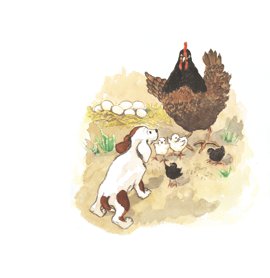 Emily: I am writing two YA books at present: One is a biography of Ida M. Tarbell, the great muckraking journalist and historian. She lived in an era distressingly like our own and was tireless in exposing its greed and corruption fairly and thoroughly.
Emily: I am writing two YA books at present: One is a biography of Ida M. Tarbell, the great muckraking journalist and historian. She lived in an era distressingly like our own and was tireless in exposing its greed and corruption fairly and thoroughly.
The other is a fictionalized life of Sacagaweaʼs mixed blood son, Jean Baptiste Charbonneau, who was educated in St. Louis and taken to live in Europe by a German prince before returning to America and taking part in every facet of Manifest Destiny, albeit in ways limited by the color of his skin.
The picture book Iʼm working on is about Strongheart, the first movie star dog. Trained as a supremely disciplined police dog in Germany, he was taught to play and then to act by a movie director. He took Americans by storm in the ’20s and paved the way for Rin Tin Tin.
And Iʼm writing and illustrating several amusing titles for a new early reader series from Holiday House.
(Holiday House, September 2012)
 Okay, coffee’s on the table, and it’s time to get a bit more detailed with seven questions over breakfast. I thank Emily again for visiting 7-Imp.
Okay, coffee’s on the table, and it’s time to get a bit more detailed with seven questions over breakfast. I thank Emily again for visiting 7-Imp.
1. Jules: What exactly is your process when you are illustrating a book? You can start wherever you’d like when answering: getting initial ideas, starting to illustrate, or even what it’s like under deadline, etc. Do you outline a great deal of the book before you illustrate or just let your muse lead you on and see where you end up?
Emily: Many of my ideas come from reading history books, which is one of my favorite pastimes. I have always been fascinated by the past and by imagining what life was like in some distant period.
Once I find a subject, I turn it into a story, which means isolating part of it and setting up stakes. There has to be suspense, and characters must change. I donʼt usually think about pictures until the text is fixed. (Mirette was an exception — it was written in the dummy.)

(1993 Caldecott Medal winner, published by Putnam)

(Click to enlarge)
I print out the text and divide it up into pages, mindful of how the story is driven forward: where there should be dramatic pauses on double-page spreads, where more information can be conveyed in spots, how to build to the climax and then provide an extra fillip on p. 32.
I will have imagined how the characters look or done the necessary research. The setting is crucial and involves research, whether the story is nonfiction, fictionalized history, or an invention.



I make a dummy and shift pictures and text around as needed. I cut up sketches on tissue paper and tape them down. This is where I can tell, because there are actual pages, whether a reader will be prompted to turn them to find out what happens. The story is like a little movie that, instead of being projected, requires the active participation of the reader, and that has to be elicited by me.
When the dummy has been approved (and there will have been many revisions after editorial input), I paint the finishes. Since I am self-taught and like to draw best, I make black and white drawings on tracing paper, then put them on a light board and trace lightly onto watercolor paper so that I have a guide for the painting. My main aim is to preserve spontaneity and movement in the pictures — dramatic moments captured in flight. I donʼt want to overwork the art, and I am not at all meticulous, as illustrators often are.
2. Jules: Describe your studio or usual work space.
Emily: I work in a corner of a bedroom in NY, in front of big windows facing south. The blinds have to be drawn many days, because itʼs so bright. But I would not trade the drama.
(Click to enlarge)

In the country, I work in a basement room cut into in a hillside. I can look out onto my perennial garden and across it to distant mountains. For breaks, I step outdoors to pick weeds.
3. Jules: As a book-lover, it interests me: What books or authors and/or illustrators influenced you as an early reader?
 dog - third grade drawing -- image003a.jpg)
Emily: When I was little, my mother read every day to my sister and me. We adored poetry, Ferdinand the bull, Dr. Seussʼ earliest books, Stuart Little, Mary Poppins.
By 8 or 9, I wanted adventure and information about how the world worked. That meant books about boys in those days (and itʼs why I have created so many stories about brave, persevering girls).

(Arthur A. Levine Books, 1998)


Marvelous Mattie: How Margaret E. Knight Became an Inventor
(Farrar, Straus and Giroux, 2006)
I read John R. Tunis about athletes and Howard Pease about boys who ran off to sea. I loved Robert Louis Stevenson, Freddy the Detective, Emil and the Detectives. For a year or so, I devoured Grimms’ fairy tales. I was a voracious reader — too many books to list!
I worshipped Ernest Shepard, Tenniel, and Wyeth. I was a great fan of the Ashcan School of American painters and Winslow Homer. Still love to look at all of them.









4. Jules: If you could have three (living) authors or illustrators—whom you have not yet met—over for coffee or a glass of rich, red wine, whom would you choose?
 Emily: Maira Kalman, David Levine, Edward Lear.
Emily: Maira Kalman, David Levine, Edward Lear.
If the two dead ones canʼt make it, Douglas Florian and Barry Blitt. R. Caldecott.
[Ed. Note: Pictured right is a cutting from a spread from Eve Bunting’s Ballywhinney Girl.]
5. Jules: What is currently in rotation on your iPod or loaded in your CD player? Do you listen to music while you create books?
Emily: I love to listen to Schubert and Mozart or jazz and much else. But Iʼm afraid whatʼs usually on is NPR. I am a political junkie.
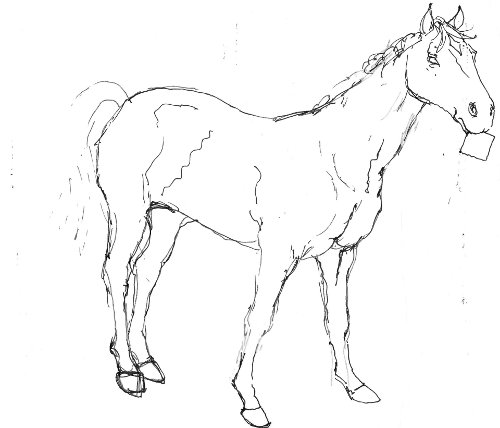
The True Story of the World’s Smartest Horse
(Henry Holt, 2010)
6. Jules: What’s one thing that most people don’t know about you?
Emily: That, while introverted, I am also stagestruck.

7. 7-Imp: Is there something you wish interviewers would ask you — but never do? Feel free to ask and respond here.
Emily: “May I please read your out-of-print novels?”


Jules: What is your favorite word?
Emily: “Delicious.”
Jules: What is your least favorite word?
Emily: “Hopeless.”
Jules: What turns you on creatively, spiritually or emotionally?
Emily: Thatʼs an awfully broad question.
Letʼs see: great art of any kind, especially performance (it should have surprise and quirkiness); crowds of New Yorkers on the street; mild, sunny weather; old buildings; great food — LIFE.
Jules: What turns you off?
Emily: Ignorance. Facebook.
Jules: What is your favorite curse word? (optional)
Emily: “Shitonabrick.”
Jules: What sound or noise do you love?
Emily: “Hi, darling.”
Jules: What sound or noise do you hate?
Emily: Jackhammer.
Jules: What profession other than your own would you like to attempt?
Emily: Tango dancer.
Jules: What profession would you not like to do?
Emily: Accountant.
Jules: If Heaven exists, what would you like to hear God say when you arrive at the Pearly Gates?
Emily: “You took your time!”
BALLYWHINNEY GIRL. Copyright © 2012 by Eve Bunting. Illustration copyright © 2012 Emily Arnold McCully. Published by Clarion Books/Houghton Mifflin Harcourt, Boston, MA. Spreads used with permission of publisher.
BALLERINA SWAN. Copyright © 2012 by Allegra Kent. Illustration copyright © 2012 Emily Arnold McCully. Published by Holiday House, New York. Spreads used with permission of Ms. McCully.
All other artwork and images used with permission of Emily Arnold McCully.
The spiffy and slightly sinister gentleman introducing the Pivot Questionnaire is Alfred, © 2009 Matt Phelan.

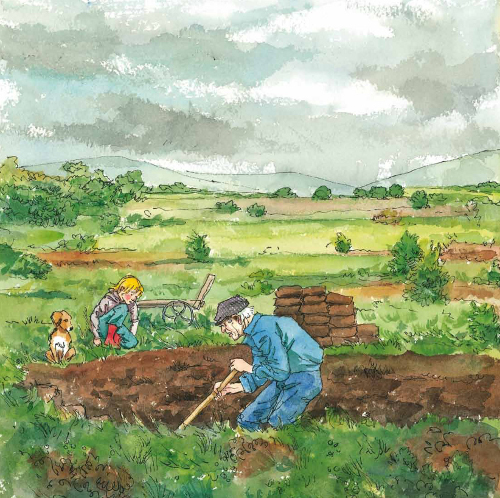



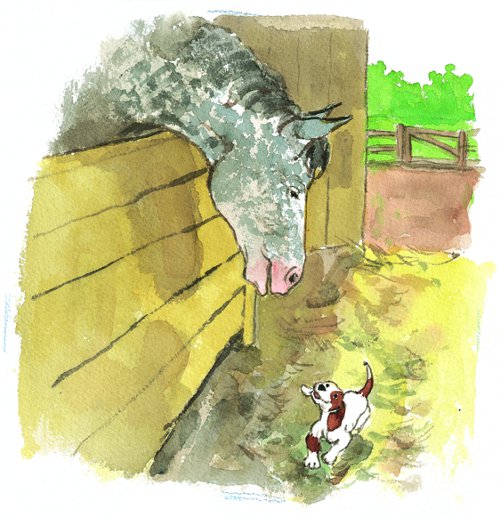






Emily and Jules…thank you so much for this entertaining, informative and delightful interview. I have a new list of books to read filled with beautiful artwork. It’s a wonderful cool evening here in northern Michigan; reading this interview is a perfect end to a perfect day. I really love–“I believe that narrative uniquely fosters empathy and even intelligence and is an essential human impulse. Introducing it to children via the picture book is a necessary mission.”
Love this interview! Been an Emily fan for ages. Had the pleasure of hearing her read Mirette on the High Wire the year she won the Caldecott.
Oh, what a delight to read this interview. I have been an admirer for many years, and just received Ballywhinney Girl in the mail yesterday…serendipity or what??? Thank you always for enlightening us with such amazing work.
Great interview! I didn’t know of some of these books and can’t wait to check them out, now!!
I too love Emily’s great statement about narrative and empathy, and couldn’t agree more. I have admired Emily’s passionate, elegant art — she draws like an angel — for many years. and it’s great to read her smart, funny, honest remarks on history and life. I wish she were running for president! But I’m also thankful that she’s out there illustrating and writing books.
And I’m amazed that she drew that wonderful dog when she was only in third grade. Genius.
fabulous! thanks. I especially appreciate that she has made such an effort to write books about brave persevering girls – I think she said. I love the last illustration from ‘What do Angels Wear’.
[…] As always, I’m following up with some art here at 7-Imp. (My 2012 breakfast interview with McCully is here.) […]
[…] Emily Arnold McCully’s Clara: The (Mostly) True Story of the Rhinoceros who Dazzled Kings, Inspired Artists, and Won the Hearts of Everyone…While She Ate Her Way Up and Down a Continent! (Schwartz & Wade, June 2016). […]